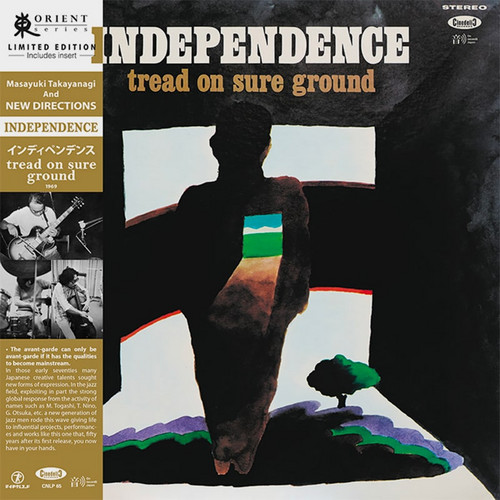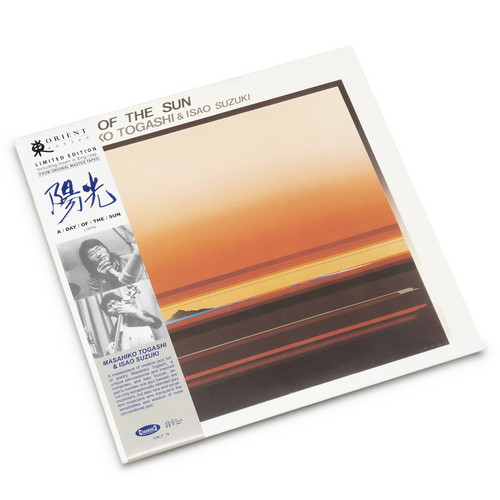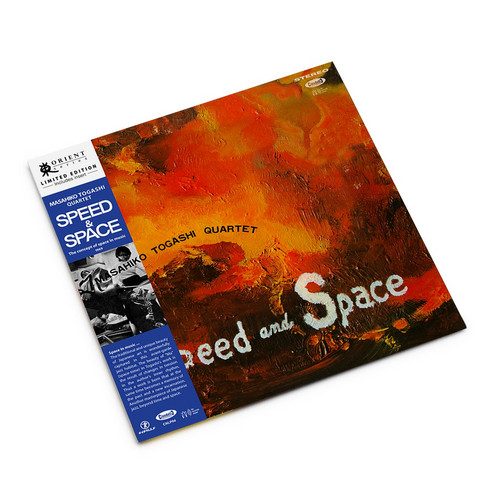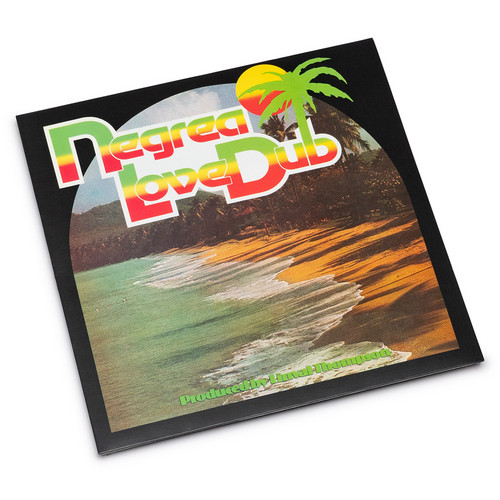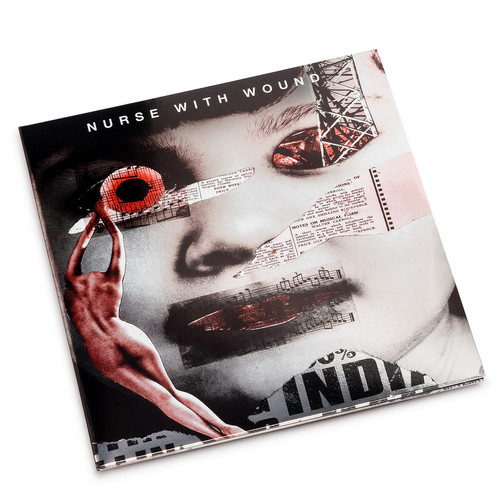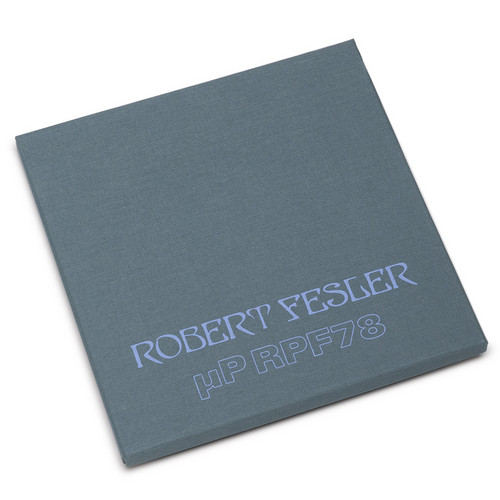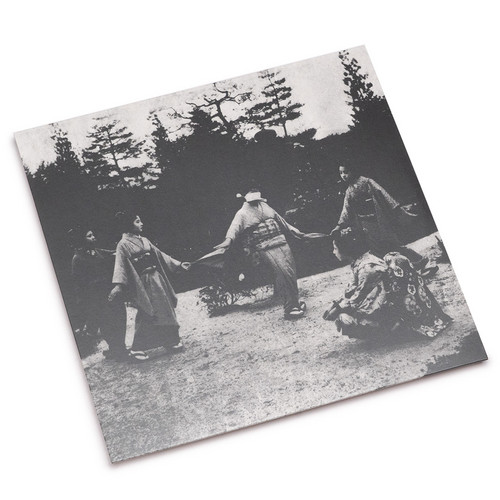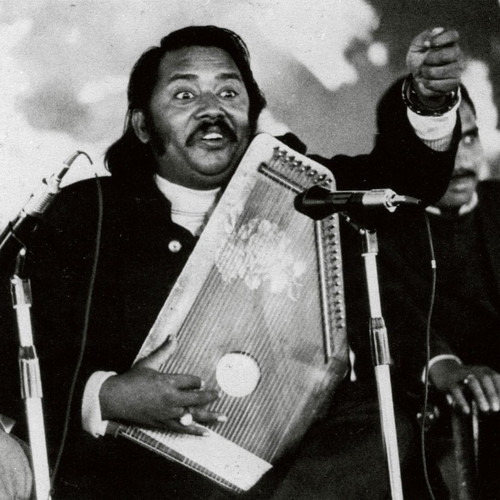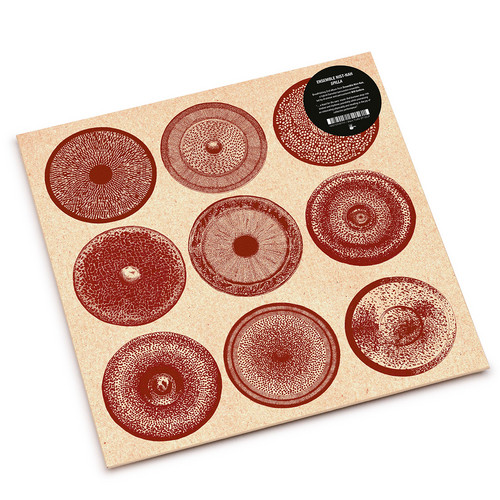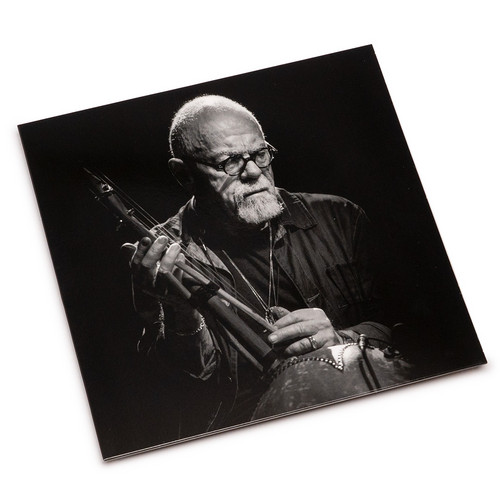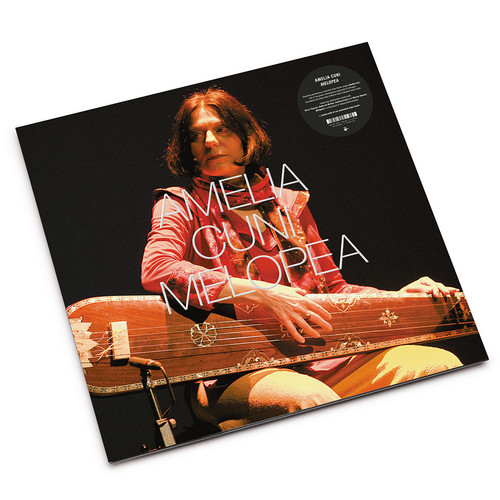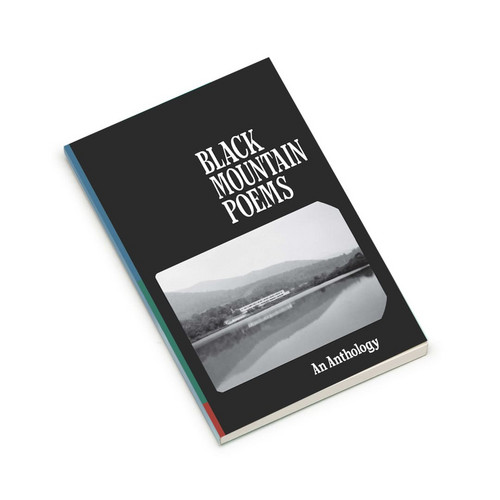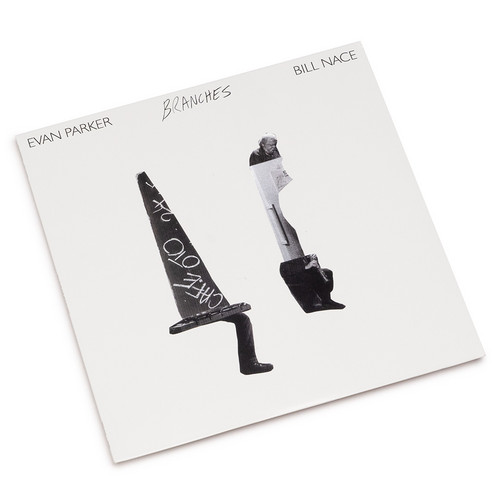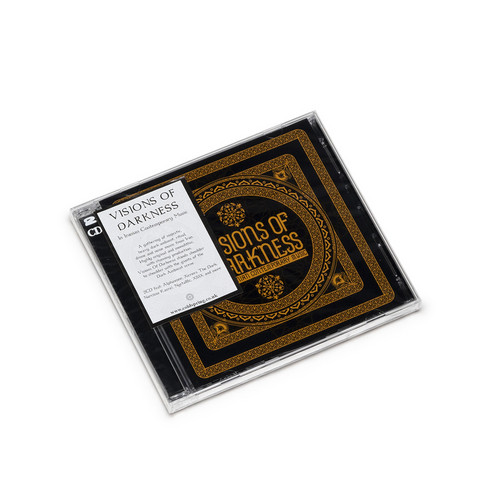Back in stock
Pensando
Finally, the LP reissue of one of the most loved albums by Italian progressive rock connoisseurs in a limited edition with gatefold cover like the 1972 original released for Kansas (the same label that produced Capricorn College Orfeo 2000 and EA Poe Generazioni). The Flashmen, a quartet from Cremona formed in 1967, have a wide and interesting discography but Pensando is at an absolutely superior level as regards creativity and maturity. A remarkable record worthy of the best groups of their con…
Black Disco
With a Yamaha organ and a dream, Pops Mohamed started his musical journey in mid-1970s South Africa as the founder of Black Disco, creating a hip and innovative blend of chill-out jazz with spiritual overtones. Playing original compositions as well as reimagined soul and pop hits, the group appeared on producer Rashid Vally's As-Shams/The Sun label alongside Abdullah Ibrahim and Harari. On the band's self-titled debut from 1975, Mohamed's cosmic organ is supported by two of the most sought-after…
Independence
**Black Vinyl edition ** The quintessential album by Takayanagi Masayuki. Considered the 'Lochness monster' of Japanese free jazz records due to its incredible rarity, this album was the debut recording of Takayanagi Masayuki as leader with The New Directions, a trio consisting out of bassist Yoshizawa and drummer Toyozumi "Sabu" Yoshisaburo. Recorded at the Teichiku Kaikan studios on 18 September 1969 (released in 1970), "Independence – Tread on Sure Ground," is largely regarded as the first tr…
A Day Of The Sun
** Coloured Vinyl edition ** A spiritual jazz masterpiece full of poetry by two geniuses of the Japanese musical scene. Masahiko Togashi and Isao Suzuki, pivotal figures in jazz with a unique talent and sensitivity that transcends conventional jazz forms and styles. In addition to being skilled performers they demonstrate extraordinary compositional talent that transcends their sensibilities and wisdom of more conventional jazz.
They are together a wonderful combination of techniques, but witho…
Speed And Space
**Black Vinyl edition ** Recorded in November 1969 at Teichiku Kaikan Studio, Tokyo, "Speed and Space - The Concept of Space in Music" is one of those landmark works in which Masahiko Togashi is accompanied by talented musicians who possess a unique style and innovative approach. The album is an exploration of Togashi's notion of the “Time Law" and can be seen as a study of how texture, rhythm and differing rates of change effect our perception of the passage of time in music.
Sounding quite o…
Negrea Love Dub
By the end of the 1970s Linval Thompson had cut out a successful dual career for himself as both singer and producer. Naturally he moved in the dub field as well, getting further use out of rhythms he used in his other works. Dub had begun strictly as an album format with limited pressing runs for scene insiders, but it had swiftly gained the interest of the rank and file reggae buffs. 'Negrea Love Dub', originally released in 1978, is a cornerstone in the reggae dub scene.
Linval Thompson produ…
Story Of Wind Behind Left
Recorded in September 1975 at Columbia Studio, “Story Of Wind Behind Left” is a symphonic poem in the shape of a suite. On the album, Masahiko Togashi uses music to communicate the same feelings evoked by nature. The drummer demonstrates unique composition and performance skills in the way he imitates the sounds of nature or takes inspiration from nature itself to make music. With “Story Of Wind Behind Left” Masahiko Togashi revolutionized the Japanese free jazz scene, that was thriving in the 1…
Edo
*Includes OBI and 4-page inserts with text in Japanese and English.* "Edo" is a cosmic ambient experimental masterpiece conceived in 1977 by Masashi Komatsubara and developed alongside with Hideki Matsutake (a.k.a. Logic System and reductively defined by many as the "fourth member of the Yellow Magic Orchestra"). As a true sound scientist, he pours all his efforts into this record, and aimed at the widest possible use of an electronic instrument that was at the forefront at that time — the Moog …
Huffin Rag Blues
Brown particles vinyl. Here is an expanded edition of one of Nurse With Wound's most intense and unique albums, so much so that for long-time fans, it was a strange, chaotic lounge oddity upon its release. For the first time, all four audio sides are complete (originally, there were only three sides). To top it off, there is a stunning new cover by the great and talented Babs Santini, who is none other than Steven Stapleton using his artist pseudonym, continuing in the luxurious tradition of the…
μP RPF78
Tip tip tip! 4LP Box, Hardboard linen LP box with silkscreened titles, 12 page booklet with notes by Robert Fesler and Baudouin Oosterlynck + A5 card with reproduction of oil on wood self-portrait by Robert Fesler. Edition of 300 copies with download code. An anthology of the intensely arresting work of Robert Fesler (1936-2023), revealing many of his compositions (1975 -1987) created with his self-built synthesizers, with as pinnacle the μP RPF78. All music composed and recorded by Robert Fesle…
Divine Comédie
Last copies...Super tip! Divine Comédie stands as a magnum opus crafted by two of the foremost composers of their era, boasting a musical ambition akin to Dante’s poem and its visual interpretation by Sandro Botticelli or Gustave Doré. For a long time, this triptych was presented as a two-sided work in which Bernard Parmegiani’s Hell and François Bayle’s Purgatory responded to and extended each other, guided by Michel Hermon’s voice through the listener’s imagination. Because Paradise, a mixed p…
Fernweh
Visionary electroacoustic explorations return as Black Truffle reissues Kassel Jaeger's Fernweh, a major work fusing musique concrète and synthesis into emotionally charged sonic landscapes of rare intensity.
Metamusik Festival Berlin ‘74
Carrying on from recent archival releases from masters of Indian classical tradition such as Kamalesh Maitra and the Dagar Brothers, Black Truffle is pleased to present a previously unheard recording of a concert by Pakistani vocalist Salamat Ali Khan. Born to a musician family in Hoshiarpur in the northwestern state of Punjab, Khan moved with his family to Lahore in Pakistan after the 1947 partition of India, becoming a child musical prodigy. Khan was a master of the kyhal form of Hindustani cl…
Spilla
Black Truffle is thrilled to announce Spilla, the second album from Nantes-based Ensemble Nist-Nah, 48 minutes of music for Gamelan, drum kits, wood and metal percussion instruments, and plucked strings that will surely count as one of the most electrifying records you hear this year. Founded by the Australian drummer/percussionist Will Guthrie in 2019, continuing the explorations begun in solo form on Nist-Nah (Black Truffle, 2020), the ensemble (eight or nine core members with occasional guest…
Christer Bothén Donso n’goni
Black Truffle is thrilled to present the first ever solo Donso n’goni recording from octogenarian Swedish multi-instrumentalist Christer Bothén. Active in the Swedish jazz and improvisation scene since the 1970s, often heard on bass clarinet, Bothén travelled to Mali in 1971, eventually making his way to the Wassoulou region in the country’s south where he encountered the Donso n’goni, the sacred harp of the hunter caste of Wassoulou society. Though playing the instrument has traditionally been …
Melopea
Super tip! Black Truffle is pleased to announce Melopea, presenting two new pieces highlighting the incredible voice of Amelia Cuni (1958-2024), the great Italian singer, based in Berlin in later life, whose mastery of the classical Indian dhrupad developed in parallel with a commitment to contemporary experimental approaches. After two stunning archival releases documenting traditional dhrupad performances in India in the 1990s (BT079 and BT092), the two side-long pieces here embody the freedom…
Meredith Monk in Conversation With Bonnie Marranca
*BIlingual Edition Italian/English* "There was a certain time when I felt that to make ar t that was useful,I wanted to offer an alternative template of the possibilities of the human being, and I wanted to creatework that was more of a sacred space, where we could come to with a belief that art has a healing power." This book is a result of a conversation between Meredith Monk and Bonnie Marranca.
Black Mountain Poems
2023 Stock An essential selection of the poetry of one of the most important twentieth-century creative movements. Black Mountain College had an explosive influence on American poetry, music, art, craft, dance, and thought; it’s hard to imagine any other institution that was so utopian, rebellious, and experimental. Founded with the mission of creating rounded, complete people by balancing the arts and manual labor within a democratic, nonhierarchical structure, Black Mountain was a crucible of…
Branches (Live at Cafe OTO)
Tip on sleeves with matte varnish finish. Branches captures the electrifying first meeting of two uncompromising improvisers: Evan Parker, the legendary UK saxophonist and pioneer of multiphonic, trance-state improvisation, and Bill Nace, the American experimentalist known for his radical guitar and taishōgoto explorations. Recorded live at London’s Café OTO on May 25, 2024, this set documents the instant chemistry between two artists who had never played-or even met-before that night.
Nace, clo…
Visions Of Darkness (In Iranian Contemporary Music)
A gathering of majestic, heavy, dark ambient, ritual, drone and noise music from Iran. Highly original and monolithic, with stunning production, Visions Of Darkness stands shoulder to shoulder with the giants of the Dark Ambient scene. In a country where youth culture has been heavily restricted for so long, it’s significant when a cultural form such as this has an opportunity to reach a wider audience – aided by the abstract nature of dark ambient, drone and noise. In comparison, the dance musi…


